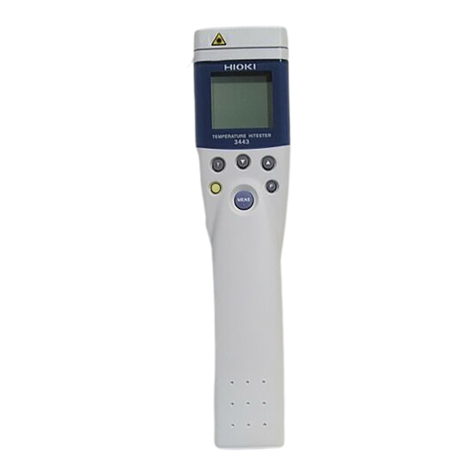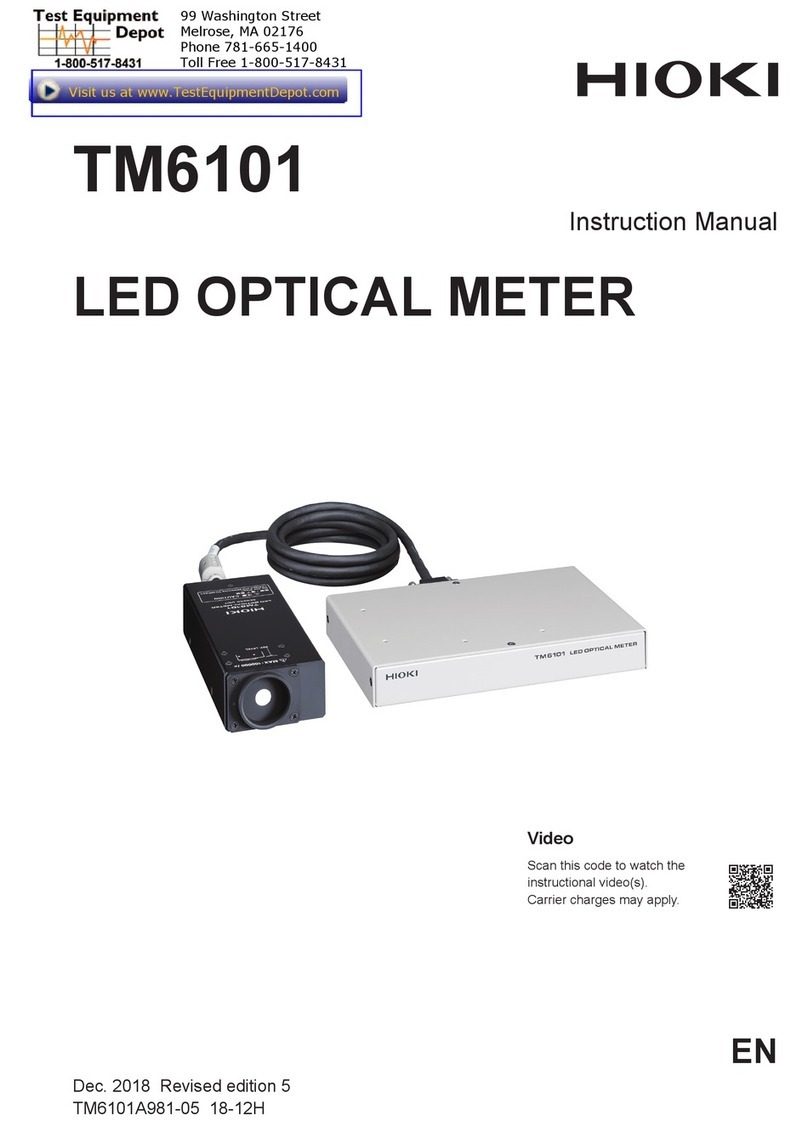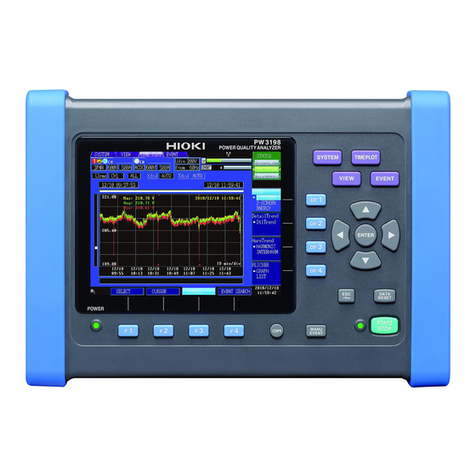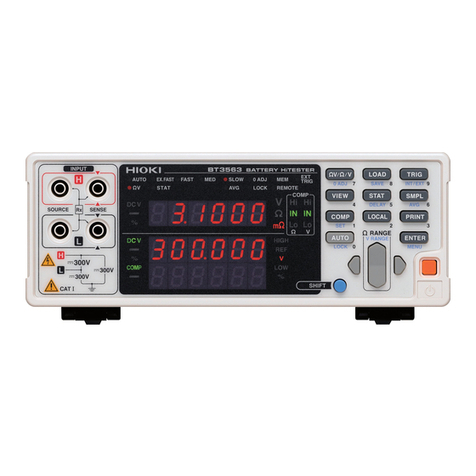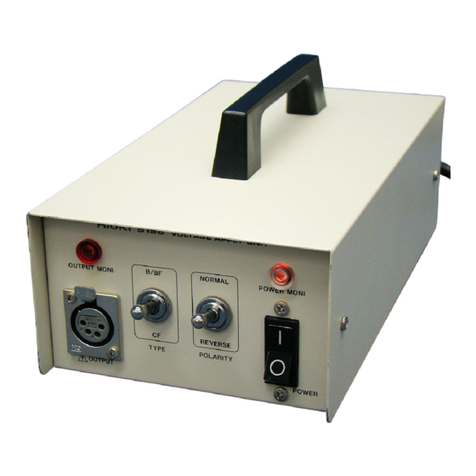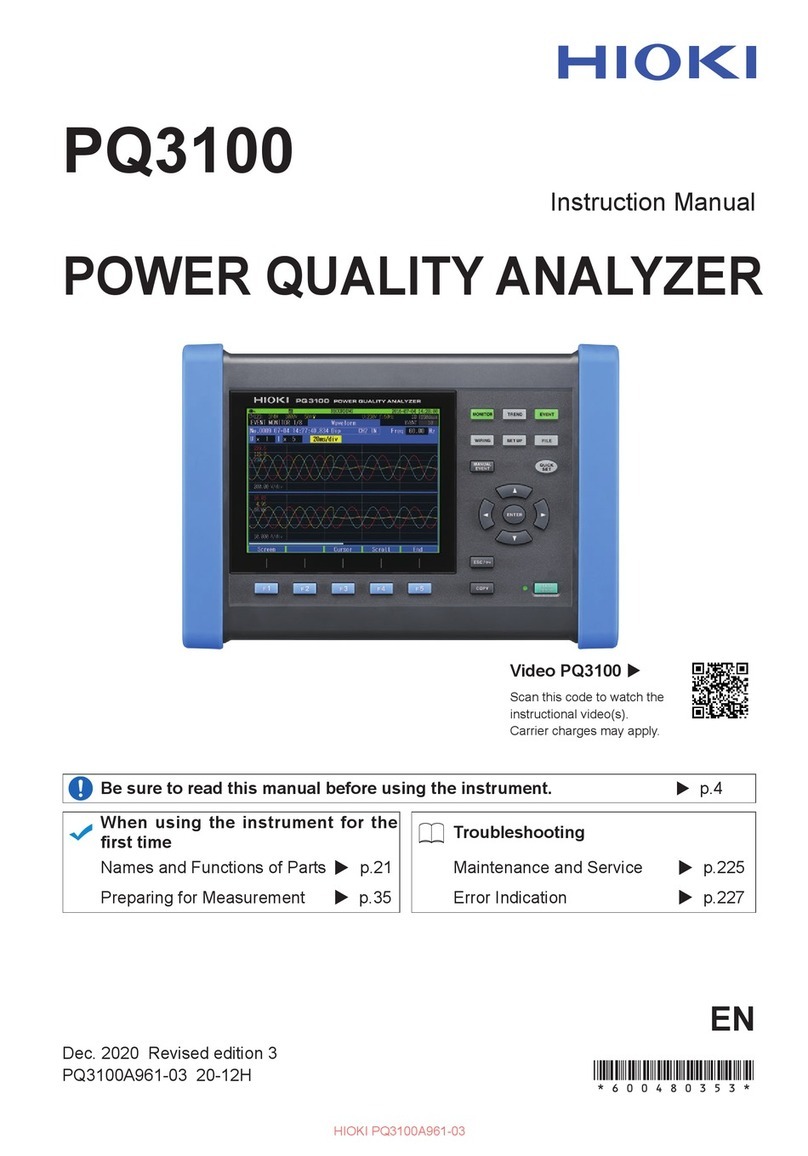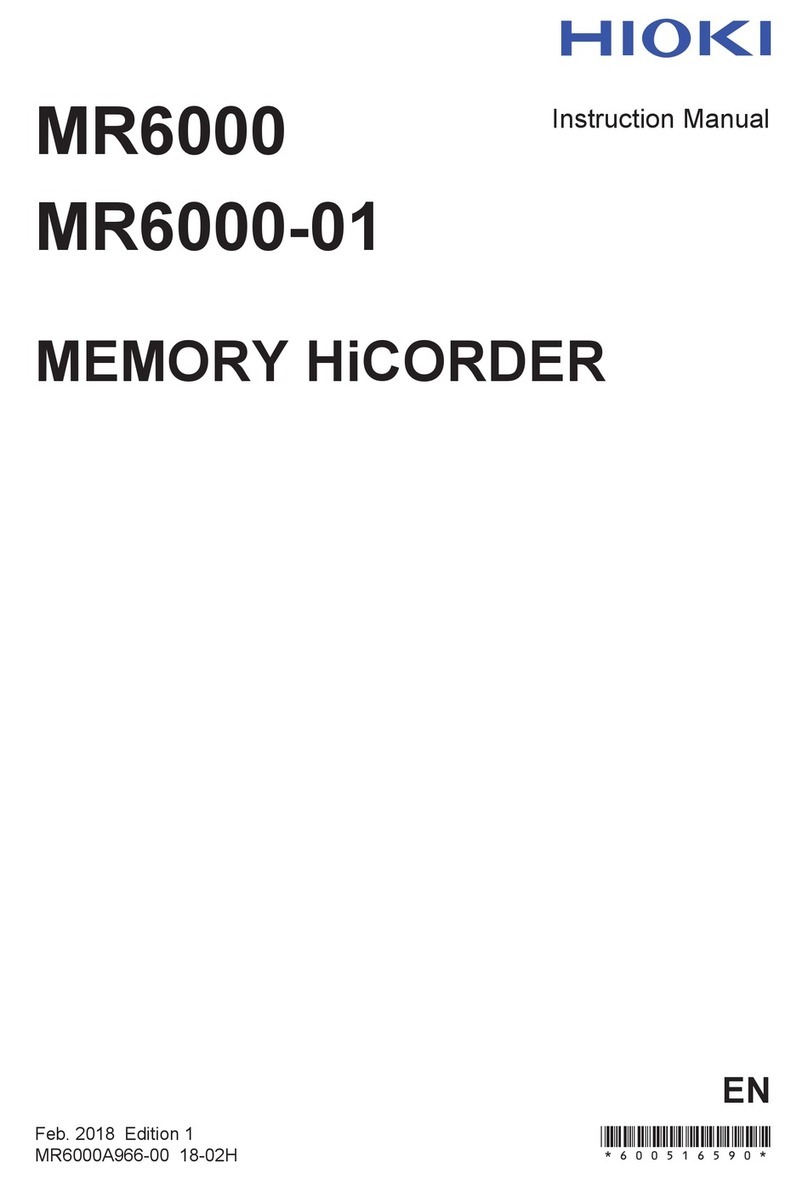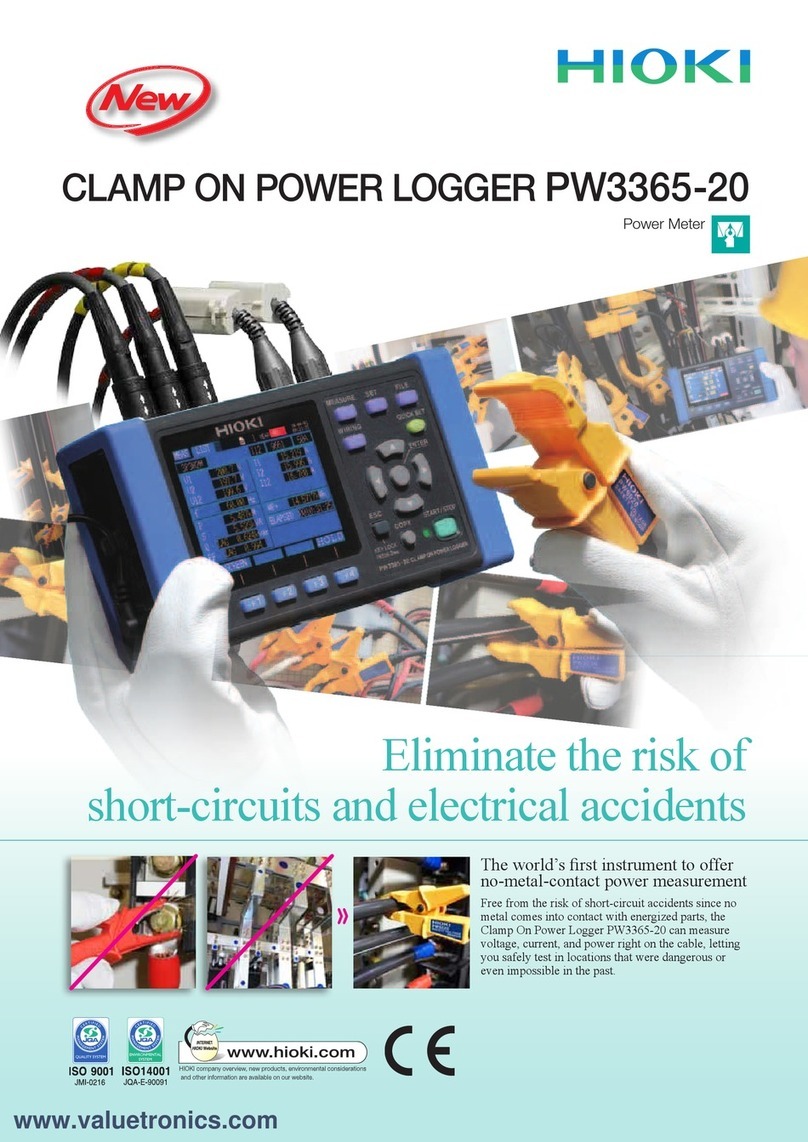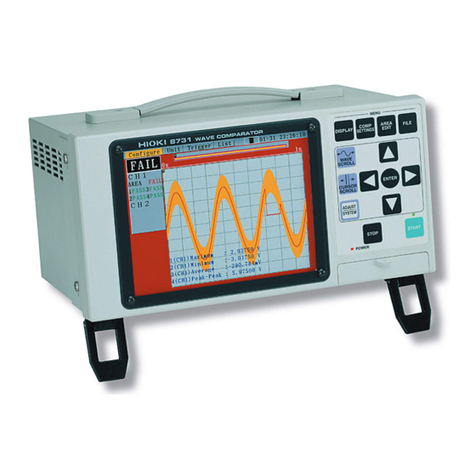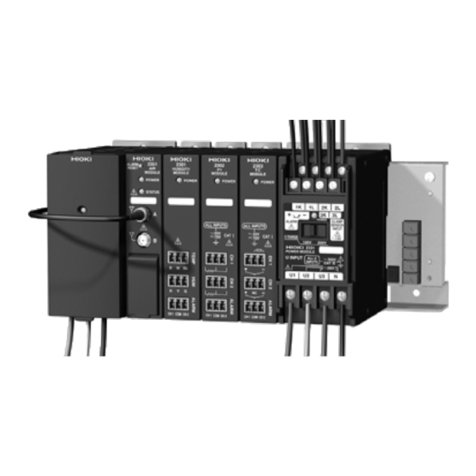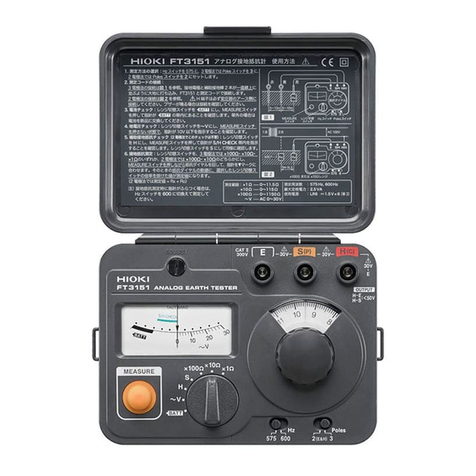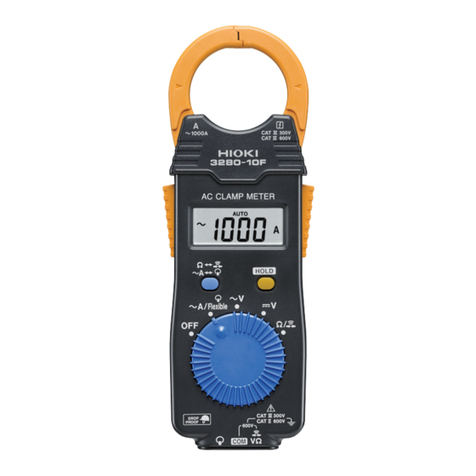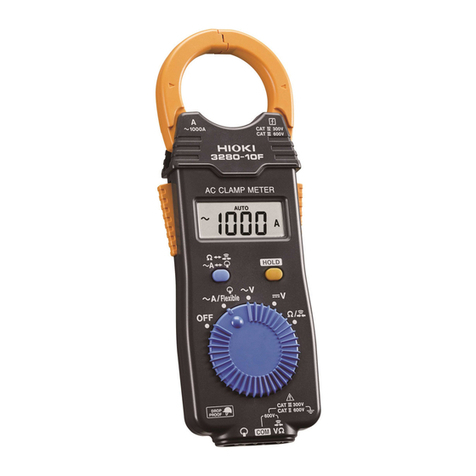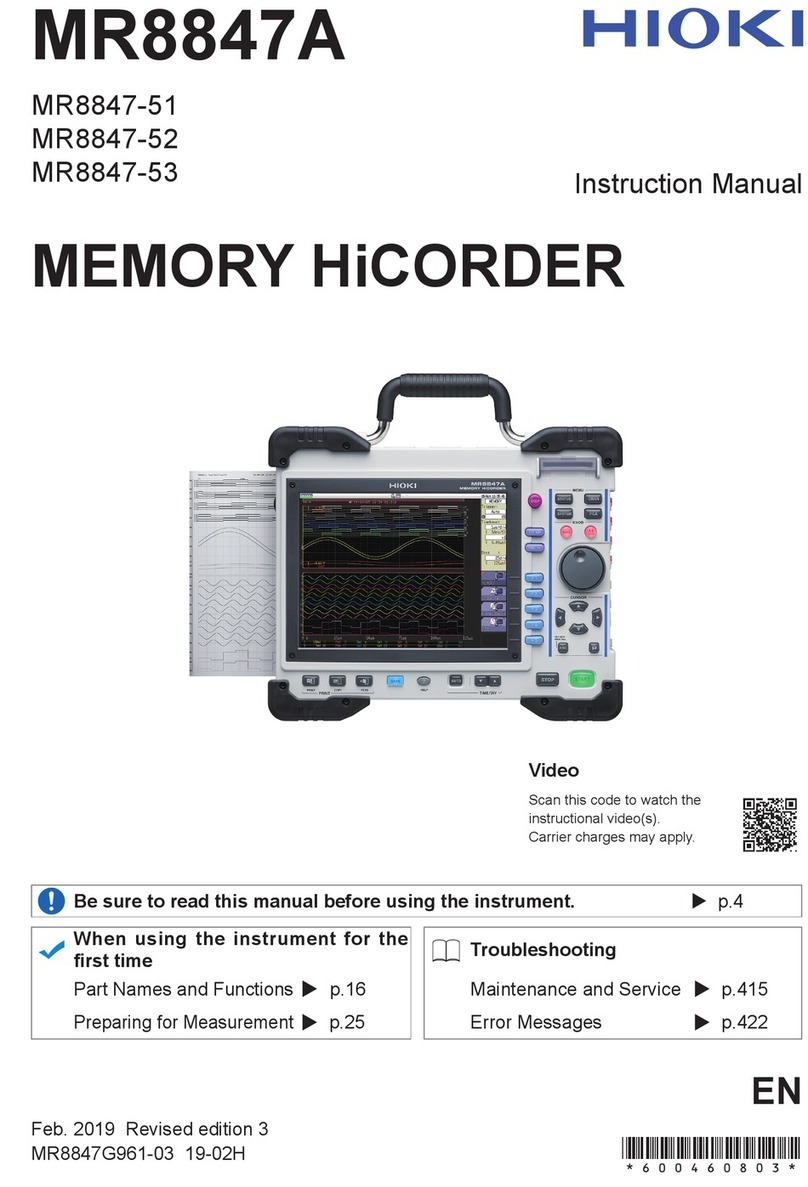
6
___________________________________________________________________
___________________________________________________________________
WARNING Do not allow the device to get wet, and do not take
measurements with wet hands. This may cause an
electric shock.
Do not press the demagnetizing switch (DEMAG) to
perform demagnetization while the conductor being
measured is clamped. Doing so could damage the
circuitry or cause an accident that might result in
injury or death.
Ensure that the input does not exceed the
maximum rated current to avoid device damage,
shortcircuiting and electric shock resulting from
heat building.
CAUTION To avoid damage to the device, protect it from vibration
or shock during transport and handling, and be
especially careful to avoid dropping.
Do not store or use the device where it could be
exposed to direct sunlight, high temperature, humidity,
or condensation. Under such conditions, the device
may be damaged and insulation may deteriorate so
that it no longer meets specifications.
Before using the device the first time, verify that it
operates normally to ensure that the no damage
occurred during storage or shipping. If you find any
damage, contact your dealer or Hioki representative.
This device is not designed to be entirely water- or
dust- proof. To avoid damage, do not use it in a wet or
dusty environment.
The sensor head is a precision assembly including a
molded component, a ferrite core, and a Hall effect
element. It may be damaged if subjected to sudden
changes in ambient temperature, or mechanical strain
or shock, and therefore great care should be exercised
in handling it.


